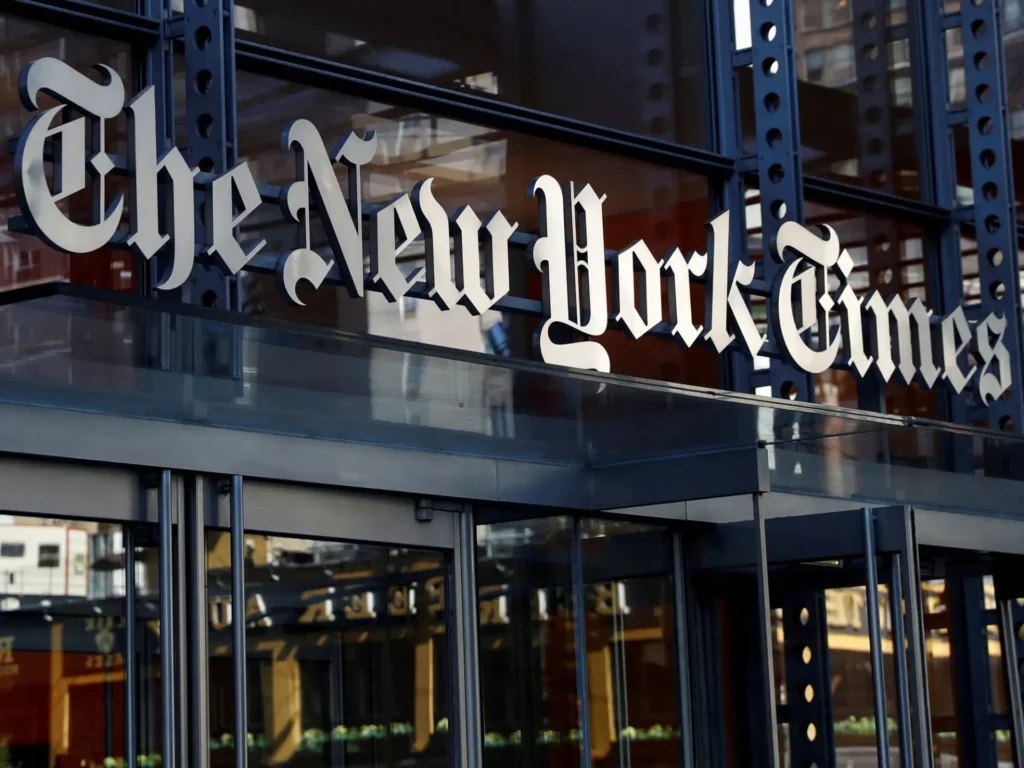By: Gulfam Shabbir | March 20, 2025
The integration of artificial intelligence into journalism is no longer a hypothetical scenario; it is happening now. A prime example of this transformation is The New York Times (NYT), which has made a dramatic shift in its stance on AI within just a few months.
The Shift: From Lawsuit to AI Adoption
In December 2024, The New York Times sued OpenAI and Microsoft, alleging that millions of its articles had been used to train AI models without permission. The lawsuit claimed that chatbots trained on NYT content were unfairly competing with the publication, potentially causing financial losses. The lawsuit demanded not just financial compensation but also the destruction of any AI models trained using copyrighted materials from The Times.
Fast forward to February 2025, and the NYT has taken a significant step toward embracing AI tools within its newsroom. According to reports, the publication has introduced internal AI tools for its editorial and product teams. These tools assist with writing headlines, brainstorming interview questions, suggesting edits, summarizing content, and optimizing for SEO. However, strict boundaries have been put in place: AI cannot draft entire articles, bypass paywalls, or utilize copyrighted materials without proper permissions.
This policy shift represents a careful balancing act between technological advancement and journalistic integrity, a move that has significant implications for the PR industry.
What This Means for PR Professionals
With AI now playing an active role in journalism, PR professionals need to adjust their strategies accordingly. Here are some key areas of impact:
1. AI-Screened Pitches
Journalists are likely to rely more on AI-driven tools to filter, analyze, and prioritize pitches. PR teams must ensure their press releases are structured in a way that is optimized for AI scanning. This means front-loading key information and using industry-specific keywords to increase the likelihood of a pitch being noticed.
2. Faster Coverage & Shorter Deadlines
AI assistance in research and summarization means that journalists can work more efficiently. PR teams must be prepared for quicker turnaround times and ensure that their materials are well-organized, easy to understand, and immediately usable. Having pre-packaged insights, quotes, and data points ready will become even more crucial in this accelerated environment.
3. AI-Friendly Content Formats
Traditional media materials such as long PDFs or unstructured data might not be ideal for AI processing. PR teams should provide information in AI-compatible formats, such as structured data files (CSV, spreadsheets), bullet points, and easily digestible summaries. This enhances the chances of the information being correctly interpreted and used.
4. Strengthening Media Relationships
As AI automates newsroom tasks, the human element of PR will become even more valuable. AI may assist journalists, but human decision-making will still determine which stories get covered. Personalized pitches, well-researched journalist preferences, and authentic relationship-building will help PR professionals ensure that their pitches stand out in an AI-filtered inbox.
The Bigger Picture
The NYT’s decision to integrate AI into its newsroom signals a broader trend that is reshaping the media industry. This is not just a one-off event but a fundamental shift in how journalism operates. PR professionals who adapt to this change will be better positioned to navigate an AI-driven media landscape.
As AI continues to evolve, staying informed about newsroom trends and adapting outreach strategies accordingly will be essential. Those who embrace AI as part of their PR toolkit—rather than resisting it—will be the ones who thrive in this new era of media relations.

